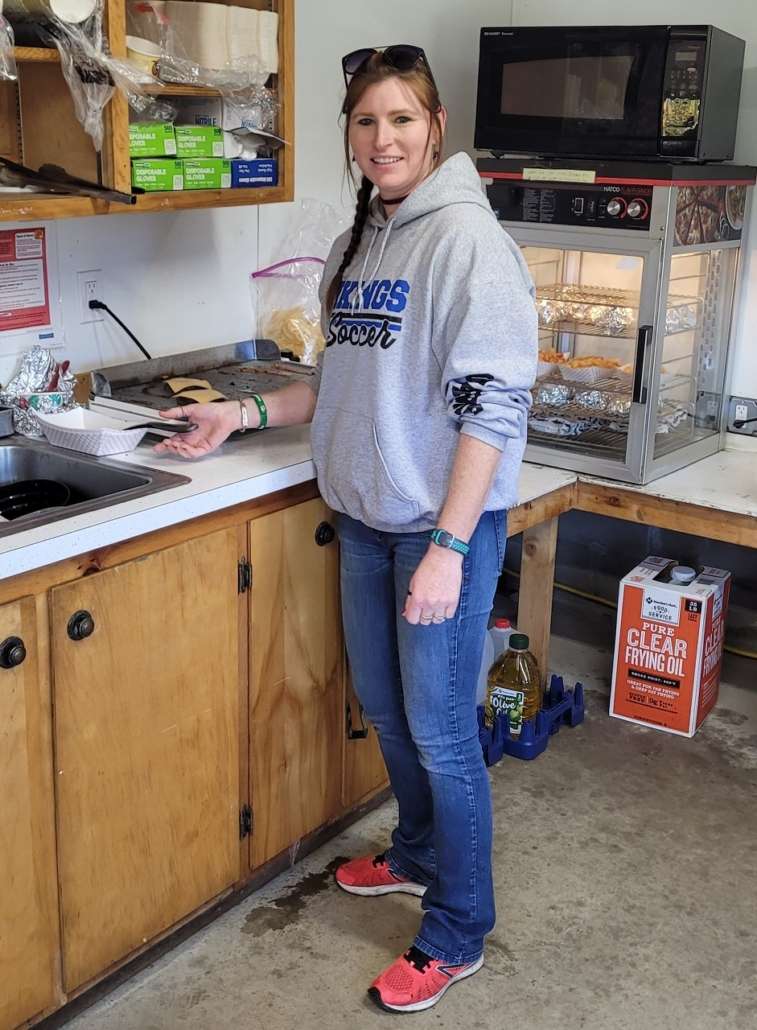Up and down the Kennebec Valley: Weather events
/0 Comments/in Augusta, Kennebec County, Local History, Maine History, Up and Down the Kennebec Valley, Vassalboro/by Mary Grow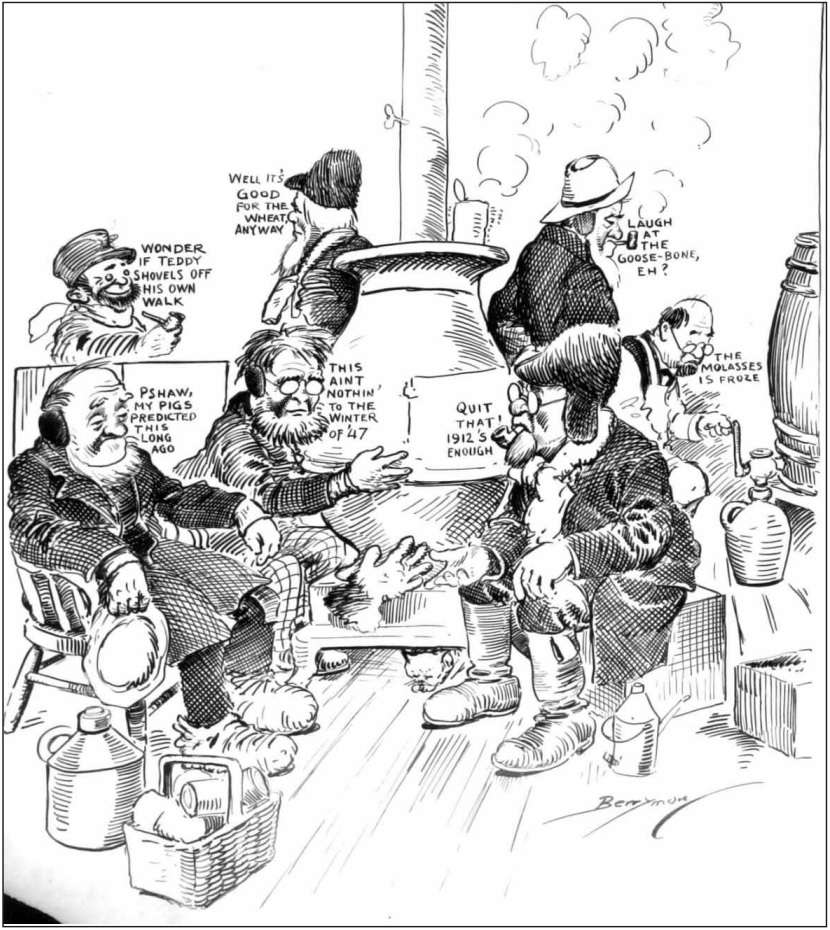 by Mary Grow
by Mary Grow
James North and Ruby Crosby Wiggin, quoted last week, were not the only local historians to mention the Year without a Summer. And 1816 was not the only unusually cold spell – though it was the longest spell of (fairly) consistently cold weather – recorded in the central Kennebec Valley since the settlers’ arrival.
The 1995 history of Maine, edited by Richard W. Judd, Edwin A. Churchill and Joel W. Eastman, reminds us that 1816 was also known as “Eighteen-hundred-and-froze-to-death.” The authors of the chapter on agriculture (James B. Vickery, Judd, and Sheila McDonald) offered it as an example of what they called Maine’s “fickle” climate.
Part of Alma Pierce Robbins’ history of Vassalboro is a summary of major events by year. 1816 she distinguished as “the year of ‘NO SUMMER,'” when “people planted their gardens with their mittens on!” July was the only month in 1816 when it did not snow in Vassalboro, she wrote.
Her account is contradicted by the authors of the Fairfield bicentennial history. Their chapter titled “Disasters” begins with “the year of no summer.” Spring was late, they wrote, with frost in May; but crops were doing well enough until central Maine got six inches of snow on June 6.
“The same thing happened on July 9 and again on August 21,” they wrote. Like other historians, including those cited last week, they wrote that the weather was one reason Maine people moved west.
They added, “The Ohio Hill road is said to be so named because of the many that left from here.” (Fairfield’s Ohio Hill Road is the section of Route 23 that runs from Route 201 a little south of the Goodwill-Hinckley School to Fairfield Center.)
* * * * * *
Other historians described, in more or less detail, other cold days and weeks before and after 1816.
Linwood Lowden quoted an early sample in his Windsor history, a March 17, 1762, letter from an Alna resident named Job Averill to a man in Massachusetts. (Alna is on the Sheepscot River, less than 20 miles downstream from Windsor.)
Averill described “a most terrible winter the snow has been for seven weeks past and is now near four feet deep and no business could be done and people are like to lose all their cattel….” Cattle were dying and people going hungry, he said.
North wrote in his Augusta history that 1780 was another cold winter, when Kennebec Valley residents were already stressed by the hardships of the Revolution. There was “uncommonly deep” snow that lasted into late April and the Kennebec River was frozen down to the coast.
The spring of 1785 saw the latest ice-out recorded up to the time North finished his work in 1870. He dated it by contemporary records of people crossing the river on the ice on April 22 and April 24, the ice moving on April 25 and ice-cakes from up-river still floating past Fort Western on May 1.
January 1807 saw another cold spell, according to North’s history. He quoted temperature readings for the end of the month: 22 degrees below zero on Jan. 20, minus 18 on Jan. 21, minus 24 on Jan 22, minus 32 on Jan. 23, a warming to minus 16 on Jan. 26 and a low of minus 34 on Jan. 27.
There was a major snowstorm in Augusta on May 6, 1812, with high wind. Snowfall was variously estimated at six to 18 inches. The Augusta Herald quoted a man said to be old enough to have “lived in three centuries” who “did not remember colder or more severe [May] weather.”
Windsor historian Lowden followed his report from 1762 with a quotation from the Thursday, Jan. 29, 1857, Kennebec Journal commenting on the extremely cold weather: “The night of Friday last [Jan. 23] was the coldest ever felt by any living inhabitant of Maine.” On Saturday at dawn, “the thermometer at the Insane Hospital registered 42 degrees below zero,” with readings elsewhere in Augusta from 37 to 40 below.
* * * * * *
Ruby Wiggin mentioned in her history of Albion multiple events related to weather and other natural phenomena – either she was unusually attentive to such events, or the small town was unlucky. For example, she wrote that there were few local records of the Year without a Summer, but people she spoke with in the 1960s remembered tales of the “grasshopper year” that she said was almost 50 years after 1816.
That year grasshoppers ate most of the farmers’ hay, as well as “other leafy crops.” Wiggin told two stories.
One Albion resident had no hay for his oxen. He kept them alive by feeding them hemlock branches and meal, buying the latter with money he earned making and selling ash baskets.
Another man found the grasshoppers had spared the hay on what Wiggin called Poplar Island on Bog Road. After ice-in, this farmer was able to cut two loads – for which someone offered him $100. He refused, because his own animals needed to eat.
(Contemporary Google maps show Bog Road crossing what appears to be a tributary of the Sebasticook River, with an island slightly downstream of the bridge – Poplar Island?)
Wiggin also noted the adventure of Lester Shorey, who lived on Drake Hill, in southeastern Albion. He attended a Grange meeting in 1901, probably on Dec. 7 (the Saturday on which that year’s anniversary meeting was held); and because the day’s hard rain had flooded out bridges over most of the streams between Center Albion and his house, it took him more than eight hours to find a road home, via Palermo.
Two historians noted a spectacular natural event in August 1787, although they disagreed on the exact date.
William D. Williamson, in his 1832 history of Maine, described an incident “too rare to be passed unnoticed.” On Aug. 26, 1787, around 4 p.m., “A ball of fire, apparently as large as that of a nine pounder” was seen in New Gloucester, Portland and elsewhere, “flying through the air in a south-western direction, at an angle of more than 45 [degrees] from the ground, when it suddenly exploded three times in quick succession, like the discharge of as many cannon, with reports resembling thunder-claps.”
There was no earthquake, Williamson wrote, but “buildings were shaken” and smoke seen. The noise was heard “as far east as Frenchman’s bay, and westward at Fryeburgh.”
North wrote that on Thursday, Aug. 30, 1787, around mid-afternoon, Colonel (Joseph, probably) North, Captain (Henry) Sewall and Ebenezer Farwell were exploring possible routes along which to lay out a road from Cobbosseecontee to Bowdoinham. Sewall recorded in his diary an aerial explosion that he compared to “a small cannon”; he and his companions “supposed it to be the bursting of a meteor.”
North pointed out that Sewall’s date differs from Williamson’s.
There was an earthquake in central Maine on Dec. 23, 1857, between 1 and 2 p.m., North wrote; it was felt in Lewiston, Augusta and Waterville, among other places. He wrote that in addition to the earth shaking, “The noise attending it, as heard by those in buildings at Augusta, was as of an immense weight in the air moving from the south and descending diagonally through the roof with a rolling and crashing sound….The noise passed off to the north with a prolonged rumbling.”
* * * * * *
Henry Sewall’s diary, for part of 1787 (mentioned above) and consecutively from 1830 to 1843, is one of three that Charles Nash quoted parts of in his history of Augusta, published in 1904. He also reprinted excerpts from Martha Ballard’s diary (1785-1812) and Daniel Cony’s diary (1808-1810).
(Your writer views with amazed admiration the historians who first turned such documents, hand-written and perhaps time-damaged, full of unexplained references, into sources of information for future generations.)
With varying frequency, all three diarists recorded weather and other natural phenomena, both routine and extraordinary. Examples follow.
Ballard sometimes ignored the weather for days on end; sometimes wrote briefly of blustery wind, snow or rain, cold or warmth, clouds or clear sky; occasionally mentioned a rainbow, or an odd color in the sky. On March 27, 1786, and again on May 1, she wrote that northern lights had appeared.
The summer of 1787 was apparently a chilly one. On Sunday, July 1, Ballard wrote “We had ice an intch [her spelling] thick in our yard south side of the house this morn.” On Aug. 4 (a Saturday) she recorded “A very severe shower of hail with thunder and litning [her spelling], began at half after one, –continued near one hour. I hear it broke 130 pains [her spelling] of glass in Fort Western.”
On March 22, 1792, Ballard wrote: “Cloudy, morn; clear the rest of the day. The sun eclipsed.” Later in the week, her husband and son were sugaring with a neighbor. The ice in the Kennebec was gone on April 3, and a friend sowed peas on May 5.
Daniel Cony was 56 and had lived in Augusta for 30 years when he wrote short diary entries in 1808, 1809 and 1810, Nash said. Often an entry was only a few words about the day’s weather.
For example, July 1808 was hot and wet; Cony recorded temperatures of 90 degrees or higher on July 1, 16, 17 and 23. August he summarized as “Dry, fine season to gather in the grain.”
Oct. 10, 1809, was another hot day, with the thermometer reaching 96 degrees in the shade. November Cony summarized as “extreme cold,” with the Kennebec frozen by Nov. 23; but between Dec. 5 and Dec. 16 mild weather with rain took out most of the ice.
According to Henry Sewall, late December of 1830 was similar to early December of 1809. The Kennebec had frozen over “passable for teams” by Nov. 22; but a “warm rain” on Christmas Day “broke up the ice.”
For Dec. 31, he wrote: “Warm and wet, which took off every vestige of snow, raised the river, expelled the ice, and took the frost out of the ground, so as to render the roads muddy and deep and the travelling bad.”
Sewall noted the May 1832 flood described in the Jan. 12 issue of The Town Line. In 1833 he commented on two phenomena: a meteor shower early the morning of Nov. 12, with “meteors flying in all directions over the horizon, which produced an effect like lightning”; and on Dec. 26 a total lunar eclipse.
There was a “considerable eclipse of the sun” on Nov. 30, 1834, but, Sewall wrote, it was “rendered invisible by the clouds.”
On Dec. 23 of that year, Sewall wrote: “Received a Fahrenheit Thermometer from Boston.” He used it to record the Christmas Day temperature, eight degrees below zero; but the next diary record is not until Sunday, Feb. 18, 1838, when the temperature rose from 15 below to 25 above.
The March 31, 1836, entry is an interestingly oblique reference to the coming of spring: “The stages continue to run eastward on runners, though they begin to use wheels westward.” The Kennebec opened April 12 and closed Dec. 1 that year.
Sewall noted his 91st birthday on Oct. 24, 1843, and apparently discontinued his diary at the end of the year. He died Sept. 5, 1845.
Main sources
Fairfield Historical Society Fairfield, Maine 1788-1988 (1988).
Judd, Richard W., Churchill, Edwin A. and Eastman, Joel W., edd., Maine The Pine Tree State from Prehistory to the Present (1995).
Lowden, Linwood H., good Land & fine Contrey but Poor roads a history of Windsor, Maine (1993).
Nash, Charles Elventon, The History of Augusta (1904).
North, James W., The History of Augusta (1870).
Robbins, Alma Pierce, History of Vassalborough Maine 1771 1971 n.d. (1971).
Wiggin, Ruby Crosby, Albion on the Narrow Gauge (1964).
Williamson, William D., The History of the State of Maine from its First Discovery, A.D. 1602, to the Separation, A.D. 1820, Inclusive Vol. II (1832).
Vassalboro select board, WPA officials meet
/0 Comments/in News, Vassalboro/by Mary Grow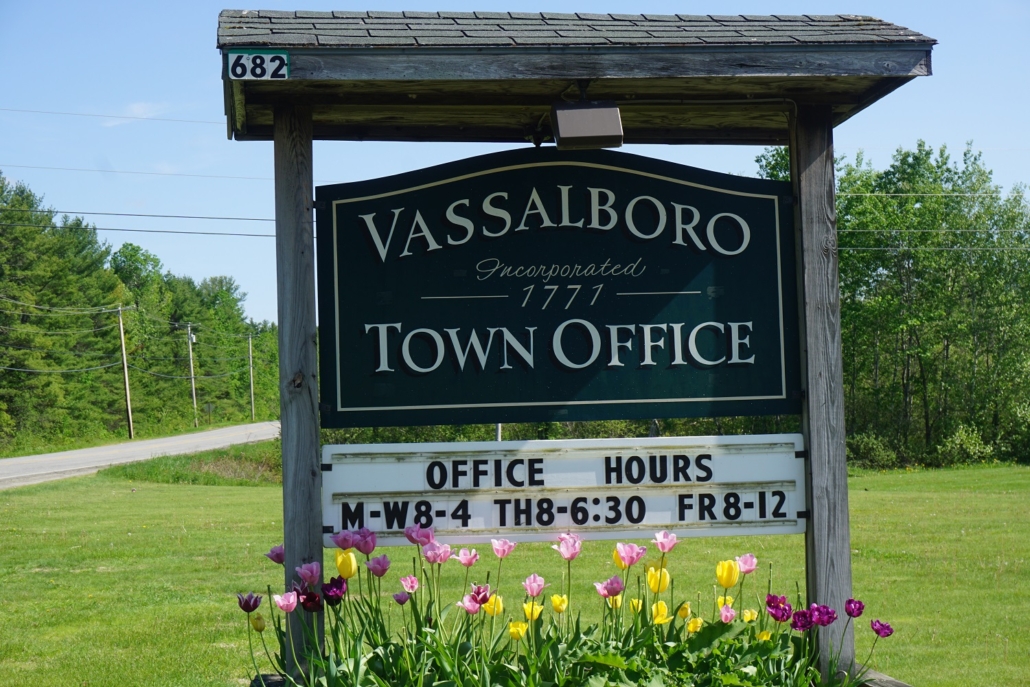 by Mary Grow
by Mary Grow
Vassalboro select board members, Webber Pond Association leaders and other interested parties held the joint meeting they planned back in November 2022, on Jan. 25.
At the Nov. 10 select board meeting, Association president John Reuthe and Department of Marine Resources staff member Nate Gray said the lake had poor water quality in the summer of 2022, mainly due to the warm weather that encouraged algae growth.
Town Manager Aaron Miller said the group at the Jan. 25 meeting discussed two requests from Reuthe, for better water quality monitoring equipment and for improvements at the outlet dam. Reuthe had no cost estimates for either.
Dam work would be aimed at making it easier to lift the boards that control outflow, so the water level in the lake could be managed more easily, Miller said. Installing a winch is one possibility.
Group members discussed possible sources of funding, including grants from out of town sources; and Miller said they considered seeking to involve neighboring towns and area environmental organizations.
Miller expects another discussion will be scheduled.
VBA ice fishing derby on tap
/0 Comments/in Community, Events, Vassalboro/by Website Editor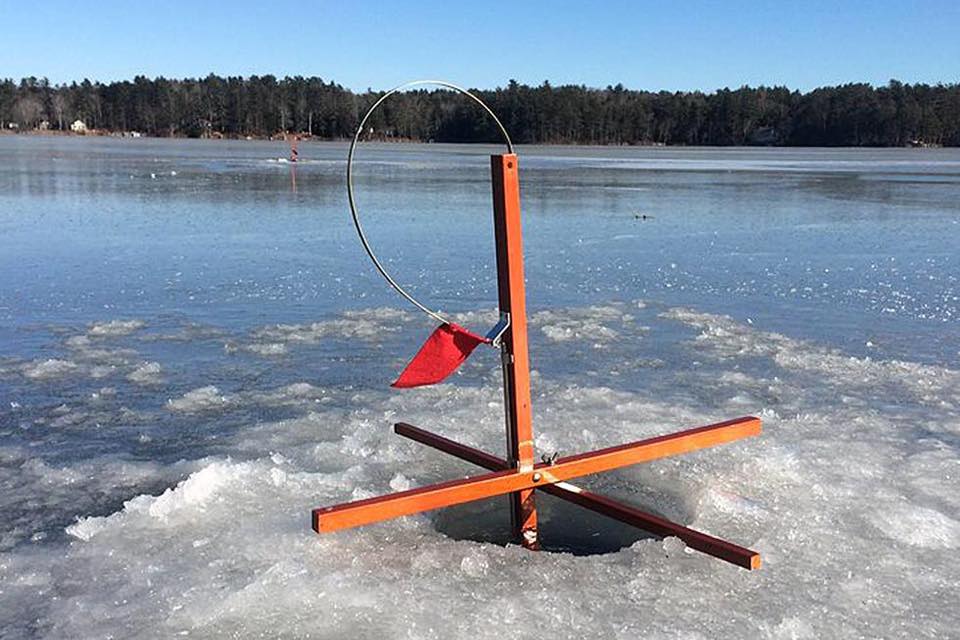 Vassalboro Business Association will be holding its Ice Fishing Derby & Raffle on Sunday, February 12, 2023, at the Olde Mill, at 934 Main St., Vassalboro. Fish may be entered from all legal Maine waters.
Vassalboro Business Association will be holding its Ice Fishing Derby & Raffle on Sunday, February 12, 2023, at the Olde Mill, at 934 Main St., Vassalboro. Fish may be entered from all legal Maine waters.
Weigh In will be from 1 – 5 p.m. Tickets for fishing entries must be purchased before 1 p.m., on February 12. $1 per ticket or 6 for $5. One fish entry per ticket.
First Prize $40; second prize $20; third prize $10 for each category. Largest fish prize $125 & trophy! (Except Pike)
Categories:
Salmon, Togue, Brown Trout, Brook Trout, White Perch, Pickerel, Pike, Large Mouth Bass, Black Crappie, Small Mouth Bass, Yellow Perch, & fish caught by children 12 and under. There are hundreds of dollars in raffle prizes. You do not have to be present to win the raffle, which will be drawn at 5 p.m. Tickets may be purchased from 201 Tire & Battery; Ray Breton (207-877-2005); Samantha Lessard at the Olde Mill (207-314-4940); The Vassalboro Town Office, Maine Savings FCU, and the Library.
2023 Vassalboro Ice Fishing Derby Prizes
Raffle tickets to be drawn at 5 PM, after the fishing derby, at the Mill at 934 Main St. in North Vassalboro. They be purchased from Ray Breton (877-2005)
*$300 North Country Rivers (800-348-8871) White Water Rafting trip for2
*$260 Natanis Golf Course (622-3561)Tomahawk Course & Cart (for 4)
*$220 Natanis Golf Course (622-3561) Arrow Course & Cart (for 4)
*$150 donated by Reliance Equipment (626-0075)
*$100 donated by Future Forests (873-1292)
*Two $50 prizes donated by Maine Savings Federal Credit Union(800-348-8871)
*Miracle II Product ($38) from Sandy’s Magic Scissors (873-2469)
*$50 from Maine Adirondack Chairs (620-2592)
*$30 from Curly’s Carpentry (649-6849)
*$50 from Pleau’s Market (873-4612)
*2 – $25 cards from Hussey’s General Store (207-445-2511)
*2 – $50 cards from Central Maine Motors
Derby sponsors:
201 Tire, Battery & Service (623-2400); AMP Electrical LLC (441-3530); Antique Classics & Fords (314-8087); Attention to Detail (649-3626); Curly’s Carpentry (649-6849); Dead Wood Designs (877-2005); Freddie’s Service Center (923-9419); Fieldstone Gardens (923-3836); The Foster Agency (622-4646) Lemieux’s Orchards (873-4354); Maine Savings Federal Credit Union (800-348-8871); Vassalboro Car Care (623-0800); & Yankee Pack Rats (416-4346)
$125 biggest Fish sponsor – Vassalboro Recreation (592-3095)
*Chidren’s hat prizes donated by Maine Savings Federal Credit Union
*Tickets costs offset by donations from Hemphill’s Horses, Feed & Saddlery (872-7964); Freddie’s Service Center; Lemieux’s Orchard; Natanis Golf Course; Peter Bragdon; 201 Tire Battery & Service; & Maine Adirondack Chairs.
VASSALBORO: School, day care provider reach agreement
/0 Comments/in News, Vassalboro/by Mary Grow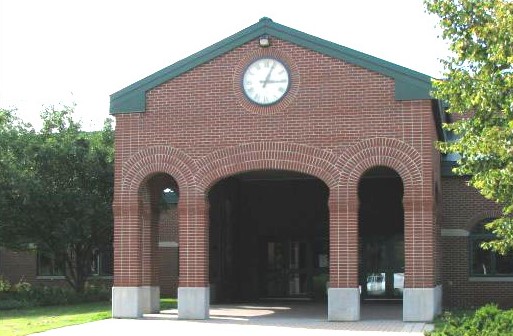
Vassalboro Community School (contributed photo)
by Mary Grow
After several months’ discussion, at their Jan. 17 meeting Vassalboro School Board members approved a lease agreement for the daycare that Jennifer Lizotte runs at Vassalboro Community School (VCS).
The daycare has operated without a formal agreement for years. The agreement runs into the spring of 2024, when it is to be discussed and if necessary amended. School board members indicated they expect to renew it in June 2024.
The longest discussion Jan. 17 was over the $25 a day fee Lizotte is agreeing to pay. The purpose is to cover janitorial services, supplies (light bulbs, toilet paper) and other expenses.
A couple people calculated the effect if Lizotte were to raise the amount she charges parents in order to cover the fee and found it would not make a large difference. Lizotte said she does not presently plan a rate increase.
The other major topic at the Jan. 17 meeting was a presentation by school counselor Gina Davis and part-time school social worker Laurie Lefebvre. They were also speaking for school social worker John Merrill, who was unable to attend the meeting.
The two explained what they do working with students, teachers and other staff and parents to help students do their best academically, socially and personally. Their days are primarily scheduled classroom presentations, group discussions and individual consultations, with schedules sometimes upended by crises.
The model they use, called the Second Step Program, is briefly explained in the December 2022 issue of the VCS newsletter, found on line at vcsvikings. December activities described were focused on “ways to show we care and how to show compassion for others.” Seventh-grade students made 225 holiday cards for area nursing home residents.
Principal Ira Michaud said he was pleased to find the program in place when he came to VCS last fall. He and assistant principal Tabitha Brewer also use Second Step; it “creates a common language through the school,” he said.
In other business Jan. 17, Superintendent Alan Pfeiffer reported for Finance Director Paula Pooler that the current year’s budget remains on target. Planning for the 2023-24 budget is well under way.
School board members approved an updated board handbook. With typical humor, Pfeiffer told them he plans to make the handbook available on the website and in paper form, “so all those in town who follow in your footsteps some day will know how easy your job is.”
Board members approved hiring Andrew Turner as an educational technician and accepted the retirement of art teacher Susan Briggs, effective at the end of the school year. Pfeiffer said Briggs has been teaching art for 40 years, the first two and a half in Waterville and the rest in Vassalboro.
The next regular Vassalboro school board meeting is scheduled for 6 p.m., Tuesday, Feb. 14 (a week earlier than usual because February vacation is the following week), in the VCS library.
Vassalboro select board listens to ARPA spending suggestions
/0 Comments/in News, Vassalboro/by Mary Grow by Mary Grow
by Mary Grow
Vassalboro select board members preceded their Jan. 19 meeting with a 45-minute public hearing to collect suggestions for spending federal ARPA (American Rescue Plan Act) funds in the 2023-24 fiscal year.
During the meeting, they rediscussed some recommendations from their Dec. 8, 2022, meeting, added a few more items and after another 70 minutes agreed to return to the topic at their Feb. 2 meeting, to decide on priorities.
The list of items approved Dec. 8 with which they began discussion included:
- At the town office, add a button opener to make the front door more handicapped accessible (Town Manager Aaron Miller said he expects cost estimates soon) and an outside glass-covered memo board; improve outside lighting; install heat pumps; and get equipment to live-stream and record public meetings.
- At the town recreation fields in East Vassalboro, add security cameras and a water spigot (for watering the playing fields, not for drinking, Community Program Director Karen Hatch explained) and replace a leaky holding tank.
- At the Historical Society headquarters, the former East Vassalboro school building, install a 200-amp electrical service and new basement lighting.
- For the volunteer fire department, buy almost another $3,000 worth of new Scott SCBAs (self-contained breathing apparatus, or air packs).
- For the volunteer First Responder service, buy a $21,000 cardiac monitor.
- For the police department, upgrade the computer in the cruiser, at an estimated cost of $5,000.
- For the Vassalboro Sanitary District, contribute $11,000 toward guardrails.
- And allocate another $11,000 for Vassalboro to host a window dressers program, which provides window insulation. Resident Holly Weidner explained that the bulk of the funds would pay an organizer, as past events have shown that there is too much work involved for town staff or volunteers to be asked to do.
During the Jan. 19 discussion, board members added $15,000 to the recreation program for field improvements and $3,400 for attic insulation in the Historical Society building. Board member Chris French calculated they had agreed on spending about $140,000.
Resident Michael Poulin suggested select board members consider TIF funding improvements at the transfer station, among other items. Board members and transfer station manager George Hamar discussed possibilities, with Hamar advocating for a redesigned traffic flow that would make using the facility safer.
Hamar did not yet have a price estimate for a cover for the new compactor, a topic discussed at several previous meetings. He suggested the redesigned traffic pattern should come first.
In reply to audience member Dave McCarthy, Hamar said there are three or four minor traffic accidents a year and “a lot of near misses.” A couple drivers have backed into him, he said.
Board member Frederick “Rick” Denico, Jr., suggested the transfer station should be relocated from the Lombard Dam Road to a sturdier road with three-phase power available.
Harking back to an expensive redesign plan prepared by the Waterville engineering firm of A. E. Hodsdon, former select board member Lauchlin Titus assured the group, “There’s no hurry; we had the same conversation five years ago.”
After almost half an hour’s discussion, the issue was tabled.
Select board members spent three-quarters of an hour reviewing the town personnel policy. Redmond and Miller will incorporate the revisions they approved into a third draft, to be discussed at a future meeting.
The next regular Vassalboro select board meeting is scheduled for 6:30 p.m. Thursday, Feb. 2. Their annual preliminary budget discussion is set for 12:30 p.m. Tuesday, Feb. 7
Vassalboro planners to forward draft ordinance on solar development to town attorney
/0 Comments/in News, Vassalboro/by Mary Grow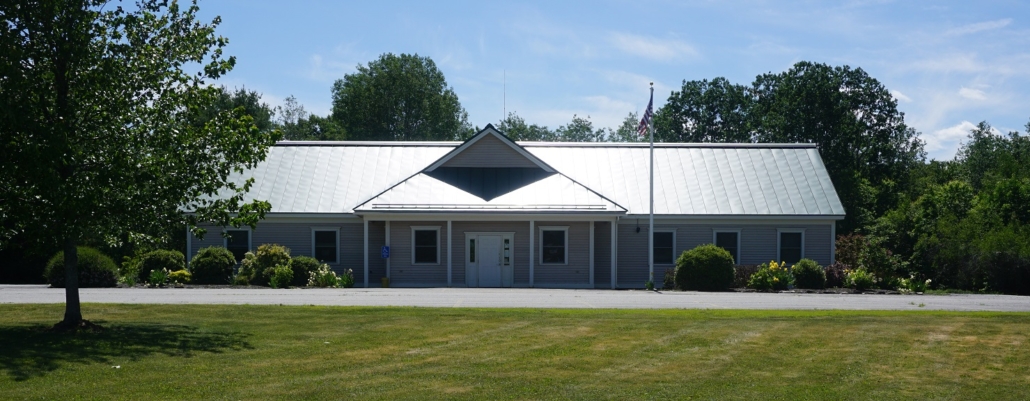 by Mary Grow
by Mary Grow
After their Jan. 17 meeting, Vassalboro Planning Board members have a draft ordinance section that would regulate commercial solar development in near-final form. They plan to forward it to the town attorney for her review.
Board members and representatives of the Main Street Maine coalition, the residents near a suggested solar site between Route 32 and Outlet Stream north of Duratherm Window Company, spent three hours on the document. Several people made presentations before planning board members settled to two-and-a-half hours of substantive discussion and wordsmithing.
There is currently no application for a commercial solar project pending. Because of the moratorium Vassalboro voters approved last November, there will be no action on any such application until at least early May 2023. Select board members may extend the moratorium, for example, until after the June town meeting if an ordinance is ready for voters’ action.
Ann White read a letter from the Main Street Maine coalition. Jerry Hill, another spokesperson, had an opinion piece in the Jan. 19 issue of The Town Line (p. 3).
The Jan. 17 letter thanked planning board members for their time and attention and acknowledged their recognition of effects of solar projects on neighbors and on Vassalboro’s future.
However, it also said Main Street Maine members “do not believe all members of the planning board have the community’s best interest at heart and are only concerned with their agenda,” and called for impartiality.
The letter said the group is not against solar, but members want appropriate regulations in place to protect residents and the environment before the planning board considers applications. An accompanying document offered suggested ordinance amendments and additions.
One proposal, compatible with Hill’s The Town Line article, is that “The residents who visually surround the project collectively have complete control of what goes into the buffer.” The buffer is the area of trees and shrubs shielding the project from view.
Coalition members recommend the ordinance include a required emergency response plan. They suggest a committee to help the codes officer, and that the codes officer be required to inspect a project weekly during construction and monthly during operation.
Planning board members thanked the group for their help. They discussed several coalition proposals, including soil (or other) tests before construction and/or after a project is operating and buffer standards.
Testing requirements generated debate between the board’s senior members, chairman Virginia Brackett and member Douglas Phillips. Phillips believes solar panels contain dangerous substances; he proposed pre-construction testing to establish a baseline and mandatory testing if a panel were broken.
Brackett said the panels are mostly silicon; other materials are in such small quantities as to be non-threatening, and their leaching off even a broken panel is highly unlikely. And, she asked, how would anyone know where to test in advance and what to test for?
Discussion ranged from soil tests before construction to soil tests after damage and from soil tests to water tests to monitoring wells. The topic will be revisited.
Current buffer requirements envision a 50-foot-wide wooded buffer around a solar installation, near property lines but not necessarily along all boundaries of a large lot with a solar array on a small part of it. The buffer would consist of evergreen trees spaced to give them room to grow, with an understory layer of shrubbery to block the view between trees. Board members debated details.
The height of the panels was briefly debated. Holly Weidner, representing the Vassalboro Conservation Commission, recommended limits not be too strict, lest they prohibit dual uses or future technologies. Board members settled on a maximum height of 16 feet as not too intrusive, but sufficient to accommodate a developer who wanted to use the ground under the panels for gardens or pasture.
Main Street Maine members want prohibitions on using herbicides or pesticides on a commercial solar installation. Board members agreed.
Various future possibilities were discussed; some may be regulated. Topics included what should be done if a solar farm changed hands, or if the land under it (assuming it is on leased land) changed hands; when a project should be considered abandoned; and how to guarantee financing to remove a no longer operating solar array.
Brackett questioned a previously-discussed requirement that the decommissioning process should restore the land to its pre-construction condition. One of Vassalboro’s approved developments is for an area that had been logged and was covered with stumps, she said; and if construction required grading, she did not think the land should be dug up again to restore the original contours.
The next regular Vassalboro Planning Board meeting is scheduled for 6:30 p.m., Tuesday, Feb. 7. Codes Officer Robert Geaghan said there are several applications already pending, including renewed discussion of Tim and Heather Dutton’s plan to reopen the former East Vassalboro Country Store (see the Jan. 12 issue of The Town Line, p. 3).
EVENTS: Maine Sci-Fi & Fantasy Nerd Fest coming to Vassalboro
/0 Comments/in Events, Vassalboro/by Mark Huard
Emmanual Hurtado, 12, of Winslow, with Batman, at last year’s festival. (photo by Mark Huard, Central Maine Photography)
by Mark Huard
A fun family event is coming up Sunday, February 5, 2023, in Vassalboro. The Olde Mill is the perfect place for what many call the “Nerd Super Bowl.”
When heading to the big mill the Fest offers a variety of activities, games, shopping and cosplay. Please dress up if you dare, many do! You’ll see sword fights, D&D, woodworks, art, wands, pottery, comics, tarot cards and readings, gaming stations such as Pokémon and magic the gathering. There will be fantasy books, Star Wars, Marvel heroes, crafts, toys, gemstones, Viking mugs, homemade treats, weapons for sale, yoga, trivia contests, unique clothing, costume contests, and so many other things. The vendors (all 50) this year, are really preparing to offer all the ultimate shopping experience too.
The event opens up Sunday, February 5, at 10:00am and continues until 5 p.m. Tickets are only $5. There will be a full food concession stand at the fest as well.
PHOTO: Four generations gather
/0 Comments/in Photo, Vassalboro/by Website Editor
From left to right, Reed Lalime Haskin, Marjory Robbins Lalime, Jody Lalime Welch, Hattie Lalime Haskin.
A reunion of four generations of mothers and daughters came together on Christmas Day, 2022. The holidays have a wonderful way of bringing families together. For the Lalime-Welch-Haskin family it meant that one-year-old Reed Haskin met her 90-year-old great-grandmother “Jamma” for the first time. Marjory, Jody and Hattie all grew up in East Vassalboro, while home for little Reed is Anchorage, Alaska. Contributed photo
Interesting links
Here are some interesting links for you! Enjoy your stay :)Site Map
- Issue for April 25, 2024
- Issue for April 18, 2024
- Issue for April 11, 2024
- Issue for April 4, 2024
- Issue for March 28, 2024
- Issue for March 21, 2024
- Issue for March 14, 2024
- Issue for March 7, 2024
- Issue for February 29, 2024
- Issue for February 22, 2024
- Issue for February 15, 2024
- Issue for February 8, 2024
- Issue for February 1, 2024
- Issue for January 25, 2024
- Issue for January 18, 2024
- Issue for January 11, 2024
- Issue for January 4, 2024
- Issue for December 21, 2023
- Issue for December 14, 2023
- Issue for December 7, 2023
- Issue for November 30, 2023
- Issue for November 23, 2023
- Issue for November 16, 2023
- Issue for November 9, 2023
- Issue for November 2, 2023
- Sections
- Our Town’s Services
- Classifieds
- About Us
- Original Columnists
- Community Commentary
- The Best View
- Eric’s Tech Talk
- The Frugal Mainer
- Garden Works
- Give Us Your Best Shot!
- Growing Your Business
- INside the OUTside
- I’m Just Curious
- Maine Memories
- Mary Grow’s community reporting
- Messing About in the Maine Woods
- The Money Minute
- Pages in Time
- Review Potpourri
- Scores & Outdoors
- Small Space Gardening
- Student Writers’ Program
- Solon & Beyond
- Tim’s Tunes
- Veterans Corner
- Donate



